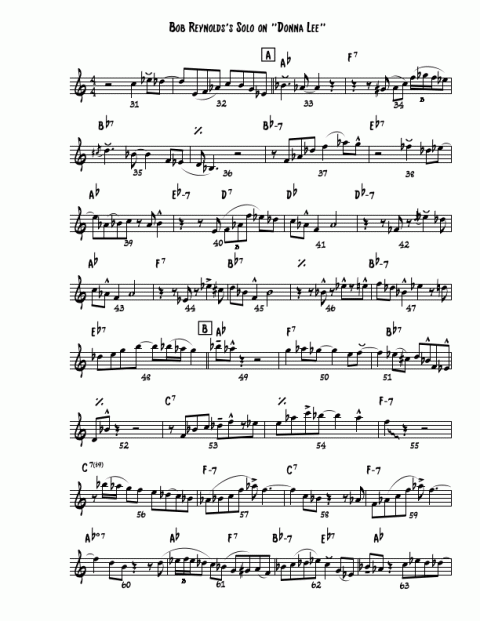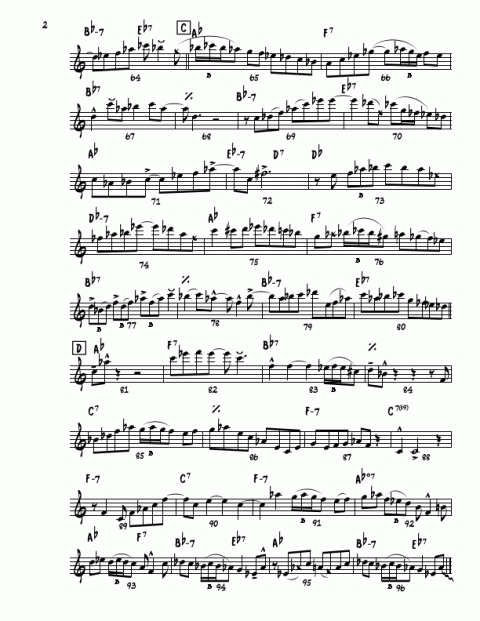The Woodshed: Focus on the Framework

As a Berklee student I took a weekend trip to New York for a lesson with one of my saxophone idols, Chris Potter. At that point, I could improvise coherently over most tunes in the Jamey Abersold library and the Real Book. I had top ratings and was in coveted ensembles. But during that lesson with Chris, I nearly fainted when he suggested playing “Just Friends” without a play-along track. I worried that with no play-along, I wouldn’t be able to hear the changes or keep the form. I was right.
As we traded solos, my mind went blank. Chris spun chorus after chorus of perfectly timed, harmonically solid genius around my catatonic and mostly diatonic nonsense.
Music in the Moment That Feels Good
Improvising is not about chord-scales; it’s about making music in the moment that feels good. If you think of your favorite improvisers—regardless of instrument, era, or genre—they likely have something in common: The music they make feels good. Maybe it’s even danceable. Feel is not a result of super-locrian scales, Coltrane changes, or nonharmonic triad pairs. It’s a combination of many elements, but confidence with the form and structure of a song, a compelling rhythmic delivery, and an imperative to say something, are a good start.
A problem with viewing improvisational choices through the lens of scales is that it creates the mindset that all those notes are equally viable, and you should use them all. This can be disastrous from a rhythmic standpoint. Improvisers end up focusing too much on the notes that “go over” a chord (up and down the staff) instead of how those notes are placed in time (left to right).
“You really do have to learn all the basics first,” wrote Pat Metheny In his online forum. “I always encourage people to be able to improvise just using the chord tones. [With] just the three, four, or five notes of basic harmony suggested by the actual chord, a good improviser can find lots of things to play. Sometimes [chord scales] mess people up [because] they think [in terms of] scales. [Scales are] really just a set of available tones. [It’s] better to practice them out of order.”
Limitations Will Set You Free
How do you practice this basic stuff? In Poetics of Music in the Form of Six Lessons, Igor Stravisnsky wrote: “My freedom will be so much the greater and more meaningful the more narrowly I limit my field of action and the more I surround myself with obstacles. Whatever diminishes constraint diminishes strength.”
So, let’s try setting some limitations for improvising. The following are seven strategies that I’ve found helpful when practicing improvisation. None involves playing “out” or using fancy scales. I apply a few of these concepts in my solo on “Donna Lee” (transcribed below).
- Put away the play-alongs. They may hinder your learning of tunes from the ground up. Instead, use only the metronome set to 80 beats per minute, feeling the measures in two with the clicks falling on beats on two and four. Then play only the roots of the chords in time. Doing this for three choruses will familiarize you with a song’s form and structure.
- Limit note choices to “right” notes. Triads and seventh chords contain three or four note options that sound good. By limiting your choices to chord tones, you free up brain power to focus on delivering those notes so that they feel good. Often we don’t spend time practicing these basic building blocks in all inversions and across the range of our instruments. So when we improvise—especially when reading changes—we feel stuck to these chords, mostly in root position. That leads to the notion that “just” playing the chords sounds boring.
- Focus on voice-leading. Follow the thirds and sevenths of the chords. (See measures 34-35.) As you visualize the seventh chords across the range of your instrument through all inversions, look closely for seventh to third transitions. This will help you to hear the chord progression.
- Be the whole band. Focus on rhythm and feel, and take responsibility for the form and harmonic progression. Regardless of your instrument, your soloing will improve if you start thinking like a drummer, piano player, and bassist. Practice walking bass lines. Limiting yourself to chord tones played mostly as quarter notes will improve your ability to improvise confidently.
- Motivic development. (See measures 41 and 43, 45 and 47, 57 to 60, 92 to 96.) A simple idea can help connect the chords rather than merely “running the changes.” Try restricting yourself to improvising a chorus or two using only the rhythm or shape of whatever phrase you play first. It will redirect your brain to navigate the changes differently.
- You don’t have to play every alteration of a chord. (See measure 88.) Ask yourself first what the musical phrase is before playing notes simply because they are in the chord.
- Leave space. (See measures 49, 52, 55, and 81) “It’s the notes you don’t play,” Miles Davis once said. But it’s difficult to leave space until you’re confident of the form and time. Letting your phrases breath a bit makes everything around them sound stronger.
Think it. Say it. Play it.
Set your metronome to 80 bpm, clicking on beats 2 and 4. Count off a blues in F and say the roots of the changes aloud and in tempo. Then repeat, naming the root and third of each chord. Next, do triads, and, finally, seventh chords. If at any point in the exercise you had to pause or felt unsure what note was next, then you know what to work on. If you can’t think of what chords are next in a 12 bar blues, then you can’t say them aloud in time. And if you can’t say them, you can’t play that progression with accuracy. It’s one thing to “ear” your way through a tune and rely on favorite patterns, but it’s quite another to really know the components of the song when improvising.
Playing in is hip! You can play out all day, but without a backing band, “out” quickly becomes noise.
The “how-to-improvise” advice on the information superhighway often excludes important basics like sound, time feel, melody, pacing, structure, and spontaneous interplay. Those are tough elements to learn from books.
By paying closer attention to playing inside the chords and adhering to the form with a good time feel, you can create compelling solos without backing or advanced chord-scale theory. And who knows, you just might make someone dance.
Bob Reynolds is a freelance saxophonist living in Los Angeles. He has toured and recorded with numerous top artists and released six albums as a leader. Visit bobreynoldsmusic.com.


Bob Reynolds’s Solo on Charlie Parker’s “Donna Lee" transcribed by Carles Margarit ’00 (visit http://carles-margarit.com). Hear it here:




